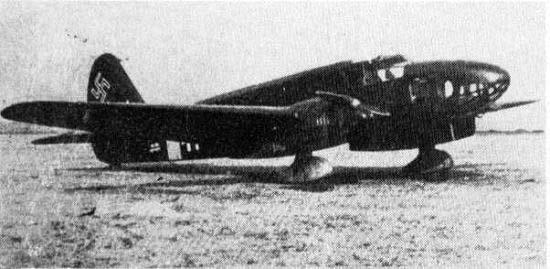Twin-engine "Caproni" were successfully operated in Libya, so the Italian Colonial Aviation Administration ordered the company an improved model. At the plant in Bergamo, under the leadership of the chief engineer Cesare Pallavicino, the development of the Ca.309 aircraft began... The Three hundred and ninth, a reconnaissance bomber and light transport, was well prepared for deployment in the sands. The wing mechanization consisted of flaps and flaps. Ailerons on consoles. The steering wheels had servo compensators. The wooden set of planes was sheathed with plywood, partly with canvas. The covering of the fuselage frame, welded from steel pipes, was made of plywood-duralumin in front, and linen to the tail. The use of simple materials facilitated the design and accelerated the repair of the airframe in the field. The fixed landing gear was covered, with the exception of the rear wheel, with teardrop-shaped fairings. Powerplant Ca.309 - two "Alfa-Romeo" A-115 series I or II (185-200 hp). The tanks held 740 liters of gasoline.
The fuselage of the new "Caproni" turned out to be somewhat narrower and longer than that of the Ca.308. The latter is due to the bow bombardier's cockpit, which had side windows and glazing from below. Ca.309 was armed with three machine guns. Two "Breda-SAFAT" caliber 7.7 mm were installed in the root parts of the wing, the third - "Lewis" - on the turrets in the front cockpit. Each barrel had 500 rounds.
The aircraft was equipped with photographic equipment, bomb racks or a cassette for 336 kg of small bombs, and on occasion could take on board six passengers. The minimum crew is a pilot and an observer radio operator.
The prototype Ca.309 flew around at the end of August 1936. It was given the name "Ghibli" (desert wind). Serial production at the Ponta San Piet Ro plant began in October. Manufactured 243 planes of nine series. Most of the "three hundred and ninth" went to the units stationed in Libya. The sanitary "Ghibli", a copy with a large number of windows, flew since 1940. The light "Capronis" served in Italy itself.
In March 1939, the pilots Krone and Fioravanti in the Ca.309 won the 4th air rally across the Sahara, which confirmed the planes good reputation.
Three main variants were produced: a colonial reconnaissance bomber with Alfa Romeo 115-I (later Alfa Romeo 115-II) engines, glazed nose, fairing wheels, weapons, crew of 2 people, series VI - close support aircraft with reinforced armament; light transport aircraft for 6 seats (crew - 2 people) with an unglazed nose, without weapons; Bulgarian KB-309 with As 10C motors, without chassis fairings; light transport aircraft without weapons, crew of 3 people. and 6 passengers.
By June 10, 1940, when Italy entered World War II, the Fascist Air Force had 93 twin-engine Capronis of various versions. At that time, the identification mark of Italian military aircraft were "fashi" ("fascias") - three bundles of rods and axes, instruments of punishment, symbolizing power in ancient Rome.
Ca.309 "Ghibli", as it should be "colonial", was based in Libya at the airfields of El-Adem, Kufra, Khon and Tripoli-Mellah. In the ranks of seven squadrons of the 50th mixed air regiment ("Stormo" in Italian) were 31 "Caproni". In addition to the "three hundred and ninth", the regiment had 24 Sa.310 "Libecchio", which replaced the outdated single-engine reconnaissance "Breda" Ba.65 in the 12th group (division) at the Sorman airbase.
Combat missions of the first month of the war - patrolling and reconnaissance, routes - Tunisia, the Mediterranean coast. Soon, "Caproni" took part in the battles, attacked the British strongholds and columns in the sands of the Sahara. The 'Three hundred and ninth' were not suitable for attack aircraft. Therefore, the Ca.309 of the VI-th series was tested with a 20-mm Breda cannon installed in the nose, which significantly overweight the aircraft.
They operated as transport vehicles until January 1943 in North Africa, later in Italy itself. By the time the country surrendered in September 1943, the Italian Air Force had lost almost all aircraft of this type.
| Type |
Transport 2-3 + 6 passengers |
| Engine |
2 Alfa-Romeo 115-II with 2-bladed variable-pitch propellers |
| Dimensions |
Length 13,30 m, height 3,25 m, span 16,20 m, wing area 38,70 m2 |
| Weights |
Empty 1745 kg, loaded 2695 kg |
| Performance |
Max. speed 250 km/h, cruising speed 210 km/h, range 670 km, service ceiling 4500 m |
| Type |
Werk.Nr |
Registration |
History |
|
|
|
|


